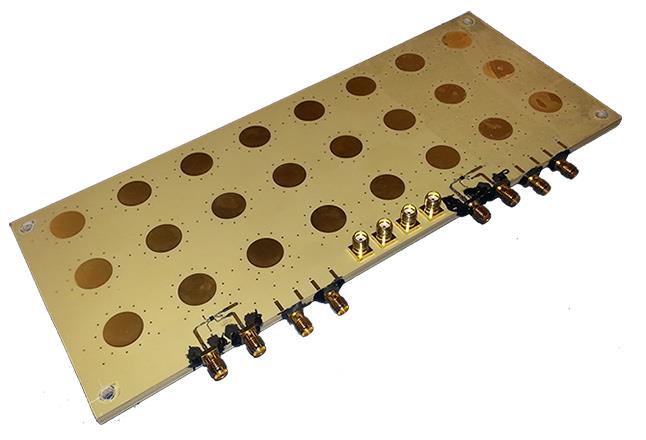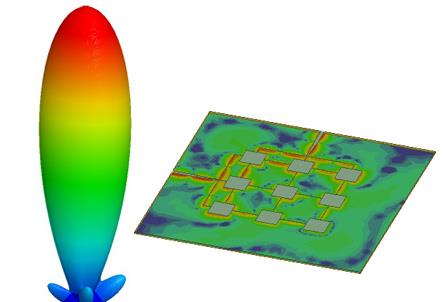With fourth-generation (4G) mobile internet technology reaching its maturity, the world is bracing for the launch of a new fifth-generation solution starting in 2017, spurred by the U.S. Federal Communications Commission's (FCC) announcement in July 2016 that spectrum will be allocated to support a new standard for 5G.
"Carriers such as Verizon and AT&T have already publicly stated that they will be offering 5G service in 2017," says Paul Gilliland, head of business development for PHAZR, a startup company based in Allen, Texas, U.S.A. "Now the race is on to see which technology provider can step up to fill this need."
 PHAZR was formed in 2016 by a group of executives and senior engineers from leading technology companies — including Samsung, Ericsson and Texas Instruments — who believed that they could quickly arrive at a commercial 5G solution better than the competition. They founded PHAZR to develop a unique 5G millimeter wave system that will address mobile and fixed-access applications. Since consistent, uninterrupted user access has not been achieved using 4G technology, the engineering challenge for PHAZR is to significantly increase capacity, allowing many more mobile broadband users to receive service with much higher speeds in the same service area. Fifth-generation technology should also support the consumption of significantly higher data quantities per user, creating a true streaming experience.
PHAZR was formed in 2016 by a group of executives and senior engineers from leading technology companies — including Samsung, Ericsson and Texas Instruments — who believed that they could quickly arrive at a commercial 5G solution better than the competition. They founded PHAZR to develop a unique 5G millimeter wave system that will address mobile and fixed-access applications. Since consistent, uninterrupted user access has not been achieved using 4G technology, the engineering challenge for PHAZR is to significantly increase capacity, allowing many more mobile broadband users to receive service with much higher speeds in the same service area. Fifth-generation technology should also support the consumption of significantly higher data quantities per user, creating a true streaming experience.
Engineers at PHAZR address this challenge by creating millimeter wave systems that can adjust beam width and power levels to accommodate a variety of user needs. PHAZR's 5G millimeter wave systems operate in the 24 GHz to 40 GHz frequency range, which means that antenna elements can be much smaller than those supporting 4G systems, which operate below 6 GHz.
By packing as many of these high-frequency antennas as possible into very small arrays, PHAZR engineers are enabling radio energy to be "steered" to the specific users being serviced. Not only will the user experience be improved, but transmission sites can be much smaller, making them easier and less expensive to install.
"What we're doing at PHAZR is really revolutionary, because it represents a new way of looking at how beams are  propagated and the frequency at which they operate," explains Gilliland. "This creates a number of engineering challenges, which we are addressing every day via simulation."
propagated and the frequency at which they operate," explains Gilliland. "This creates a number of engineering challenges, which we are addressing every day via simulation."
PHAZR's product development team leverages the power of ANSYS software for electromagnetic simulations to study the radio frequency propagation of various antenna and array designs at different frequencies across a variety of materials. As they analyse the results, engineers can make changes to the designs and move forward quickly until they arrive at an optimal solution. The simulations are extremely accurate, and they allow PHAZR to avoid building expensive and time-consuming evaluation parts — saving at least two weeks per design.
According to Gilliland, not only is ANSYS software helping the PHAZR team speed up its analysis, but it is providing all-important design agility and flexibility. "There are still some uncertainties in exactly what 5G service is going to look like, so we're making assumptions in our product design efforts today," Gilliland says. "As the standard and requirements become clearer, ANSYS software will allow us to make rapid changes to meet those requirements, without investing in physical testing or prototypes."
Gilliland notes that the ANSYS startup programme has been critical in enabling PHAZR to compete with much larger companies. Gilliland points out, "It means so much to our team to have access to a world-class product development tool like ANSYS software without making a huge financial investment."
"Without the power and agility provided by engineering simulation, we would be challenged to be in the race to compete with feasible 5G solutions," he adds. "Backed by a wealth of industry knowledge — along with the powerful capabilities of ANSYS software — we're hoping to win that race and establish PHAZR as a 5G market leader."